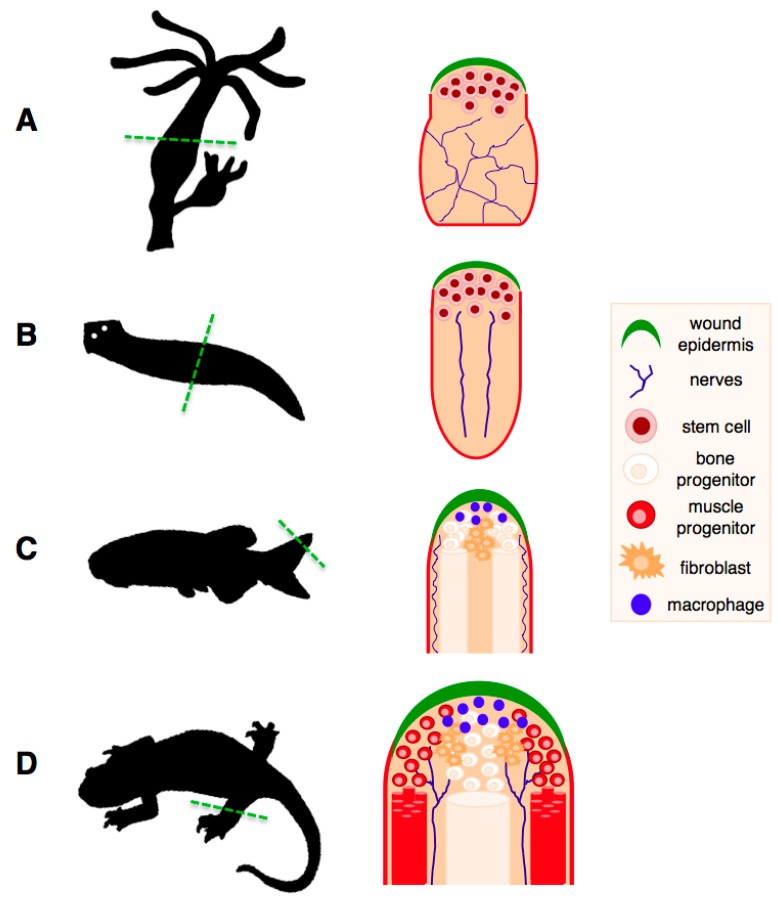Figure 2.
Regeneration of complex structures in classic regeneration models. (A) Regeneration of a hydra polyp following amputation across the body stalk. Regeneration takes place through mobilisation and activation of multipotent endodermal and ectodermal stem cell populations; (B) Regeneration of a planarian flatworm following bisection. This process takes place through recruitment of pluripotent stem cells, termed “neoblasts”, which are present throughout the animal and carry out tissue maintenance functions. A single clonogenic neoblast is capable of regenerating an entire organism; (C) Regeneration of the zebrafish fin. Upon amputation of the fin, differentiated cells at the amputation plane undergo dedifferentiation and proliferate to form a pool of progenitors called a blastema, which will then undergo growth and redifferentiation into the new fin tissues; (D) Salamander limb regeneration depends, as in the zebrafish case, on the dedifferentiation of mature cells from the tissues at the amputation plane. Unlike the zebrafish fin, which grows continuously, salamander regeneration takes place in the context of mature adult tissues. Both in zebrafish and salamanders, the dedifferentiation process generates progenitors of limited potential, which can only regenerate their tissues of origin. The wound epithelium, nerve supply and macrophages are critical components of the regenerating niche, without which regeneration cannot proceed. Adapted from Brockes et al. [48].

